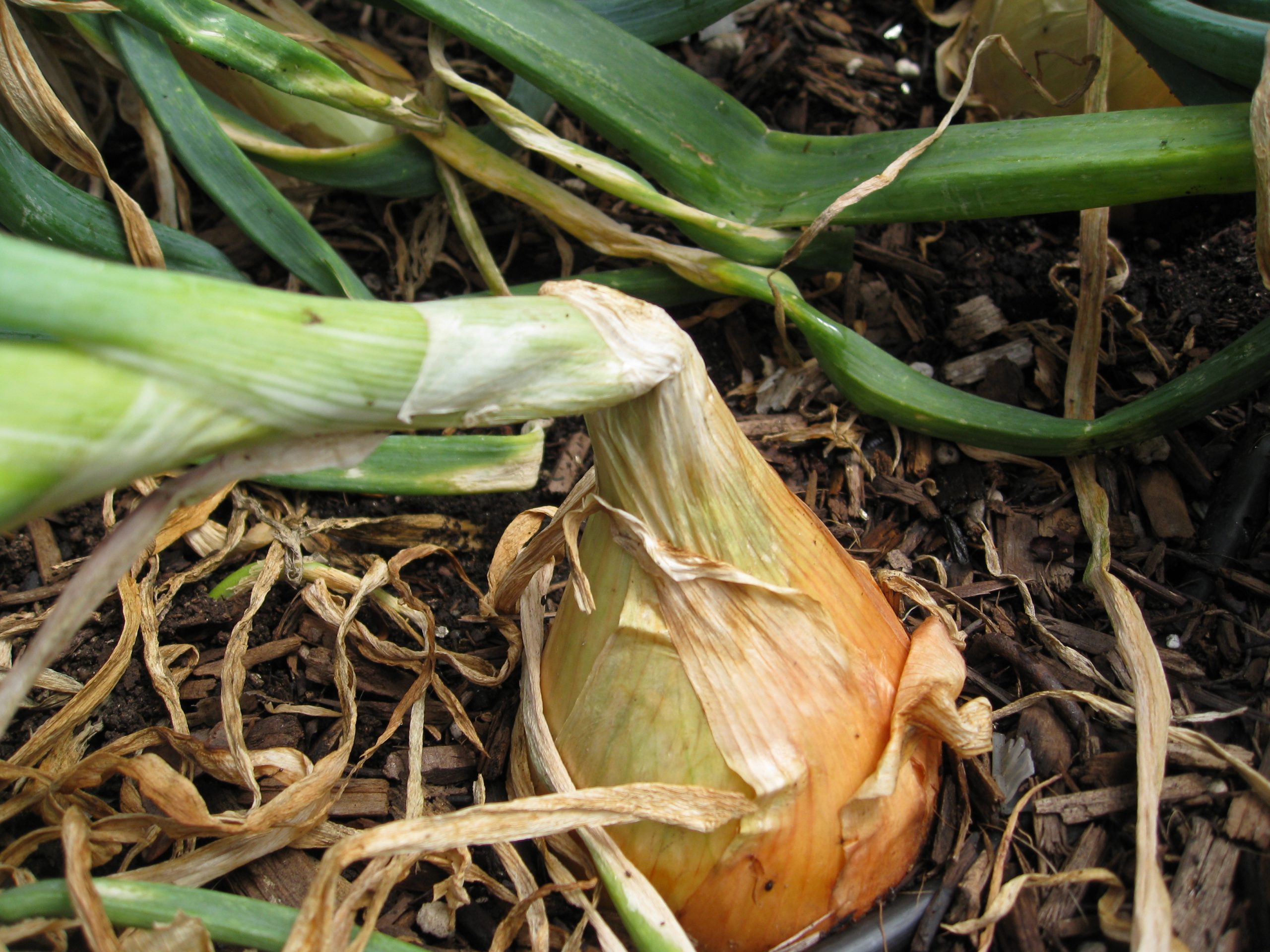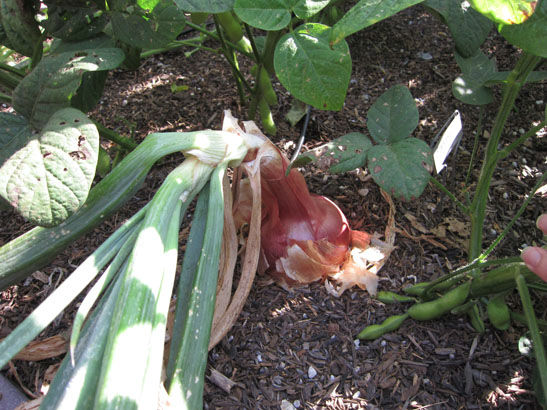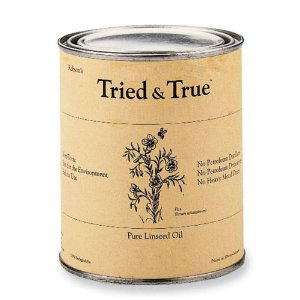We received a great question from Sue Payne regarding onions this week: “I planted yellow Spanish onions last September from seedlings that I picked up in a nursery (they were little, about 3″ tall, 1/16″ in diameter, in soil). I planted them in a garden bed with compost, about 6” apart. They grew nicely, but have never “bulbed”. I just noticed that many are starting seed heads, so I don’t think I’m going to get onions. I’m guessing I planted them at the wrong time/season. Or too much or too little water? Thank you!”
Sue, there are several reasons why this might have happened. First of all, you’ve touched on a pet peeve of mine: Nurseries that carry the wrong type of onions for the climate. Let’s discuss…
Long Day vs. Short Day
It’s important to know the daylight requirements of onions. You planted your onions at the right time for warm-winter climates. They grow best through the winter and bulb up in spring/summer. Certain cultivars require more daylight hours than others in order to bulb up. Typically, long-day onion varieties are grown in northern climates, where they have daylight into the evening–14-16 hours. Walla-walla, and sadly – your Yellow Spanish, are among them. Long-day onions generally don’t bulb up in southern climates since day length over winter is about 10 hours.
You can still eat them before the flower (the center stalk will become tough as the flower develops, so harvest and remove that center stalk before eating). You just won’t get the big onion you were expecting.
Even though we have long days in summer, our onions are generally grown in fall’s cooler temperatures, when days are shorter. Your best bet is to grow short-day onions over winter, and save long-day onions for early spring planting, if that’s all you have access to. Short-day varieties include Red Creole, Texas Early Grano, and White Bermuda (note the Southern trend in their names).
Plant Spacing
My next pet peeve about onions is that most nurseries (or instructions on the plant) don’t tell you to separate each cell in that 6-pack into individual seedlings. Most 6-packs have 8-10 seedlings per cell, around 60 seedlings to a 6-pack. If you plant one cell, thinking it is one onion, your onions will be too crowded and will never bulb up. If you purchased onions sets online (bare-root bundles of half-dead looking green onions) that is not an issue.
It sounds like you separated your onions into individuals, but if not, that is a contributing factor to successful onion growing. 6″ apart is great for standard garden spacing. We use 4-5″ spacing for biointensive gardens.
Sources for Short Day Onions
We have our favorites. Here they are:
Southern Exposure Seed Exchange
Thanks for writing in, Sue. I hope with this information you have better luck growing onions next season.





Why are some of my onions are not drying properly. The green shoots are still green and they have been drying for almost 1 month!
Sorry to hear that is happening, Maria. There could be a number of reasons. Usually with onions, when we pick them we’re supposed to leave them out in the sun for a few days to dry down a bit before bringing them in. If you didn’t do that, it could be contributing to the problem. Also, some onions varieties are not considered “storage onions”. They have a shorter shelf life than those varieties that are bred for storage. It may be that your storage conditions are too bright, warm, or humid for them to properly dry down. Do a quick search on the variety you grew and looking for information about it’s average storage length, and how to specifically cure that onion for storage. That may improve your results. If not, try growing “storage onions” next time and see how it goes.
Hi. I’m in Newfoundland in eastern Canada. My Spanish onions are growing well, I’ve cut them back as noted in several articles i read. But no sign of bulbs forming. They’re 3 months along now. Is there something wrong or will bulbing still occur later?
Jeff, you’re in the right latitude to be growing Spanish onions, so that’s not the issue. I’ve never cut down the onion foliage while they are growing, and I’m not sure why some folks recommend doing that, seeing as the foliage is the most important for growth and maturity. Here’s an article about that advice: https://www.gardeningchannel.com/gardening-myth-onion-tops/. The thing responsible for bulbing is Phosphorus, the middle number on your bag of fertilizer. I’d recommend testing your soil for levels and amending as needed. Also, as we say in the soil food web world: the nutrients are there, they just aren’t accessible to your plants. The right biology in the soil will make these locked up nutrients available. So look into Active Aerated compost tea applications for the solution.
I Live in Cobram Victoria, Australia, onions planted mid winter, now in spring and not bulbing up, what is the best type of onion for my area
Hi Douglas, it looks like you are at 35º South, which is about the latitude of Los Angeles, CA in the opposite hemisphere. From what I can tell, you’ll want to choose short-day onions for your area, which need fewer than 16 hours of daylight in order to bulb up. Check your nurseries and seed catalogs for options. You may have to grow from seed if nurseries don’t carry the right type for your latitude.
My onion sets have grown strong and tall in 6weeks but not bulbing
Will they bulb at all in time
Fear not, Ivan. Your bulbs will take most of summer to bulb up, but in the end they will. They are a longer-term crop than green onions or other veggies. At 6 weeks they’re just getting started. Hang in there!
Pingback: YouTube: Best Trick for Planting Nursery Onion Seedlings - Gardenerd
Pingback: YouTube: Choose The Right Onions by Day Length - Gardenerd
Thanks for your notes on growing onions. Do you advise removing the tough seed scape to encourage bulbing? or does it matter?
Usually if a seed head appears before the onion has bulbed up, that means the onion is stressed and isn’t going to bulb up. Generally I advise people to harvest those onions ASAP and use them fresh, rather than trying to cure them for storage. That said, I do remove the seed stalk when cutting the onion for use because it is noticeably fibrous when you attempt to eat it.
Thanks, very helpful!